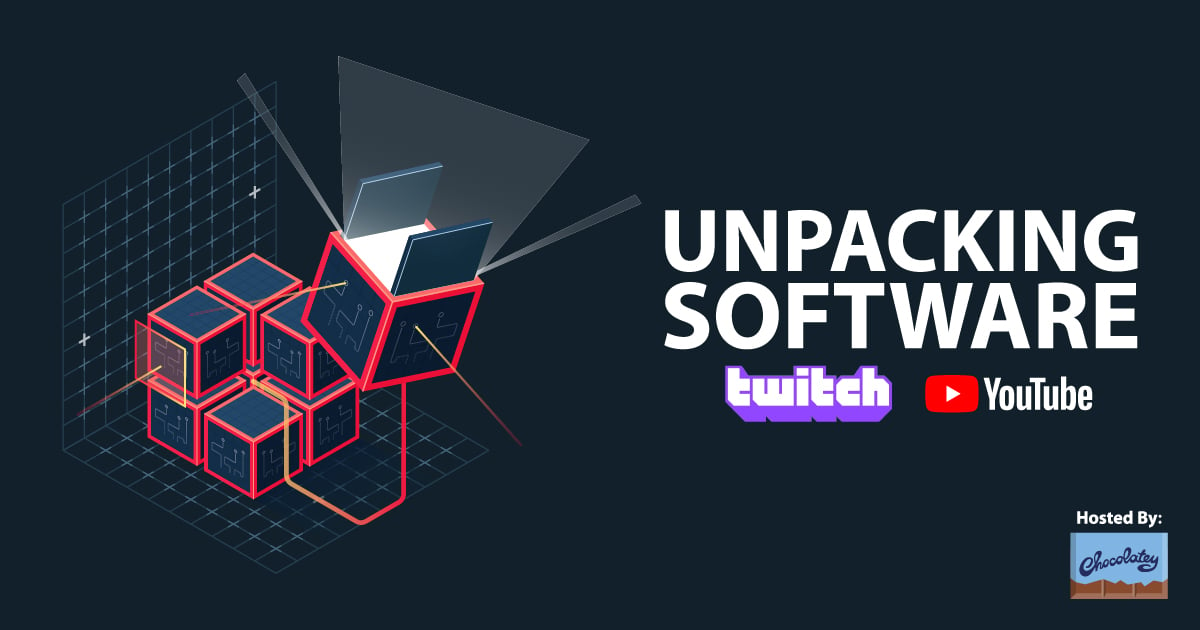
Downloads:
10,824
Downloads of v 4.4.0:
127
Last Update:
30 Jun 2021
Package Maintainer(s):
Software Author(s):
- KNIME.COM AG
Tags:
- Software Specific:
- Software Site
- Software License
- Software Docs
- Package Specific:
- Package Source
- Package outdated?
- Package broken?
- Contact Maintainers
- Contact Site Admins
- Software Vendor?
- Report Abuse
- Download
KNIME (Portable)
This is not the latest version of KNIME (Portable) available.
- 1
- 2
- 3
4.4.0 | Updated: 30 Jun 2021
- Software Specific:
- Software Site
- Software License
- Software Docs
- Package Specific:
- Package Source
- Package outdated?
- Package broken?
- Contact Maintainers
- Contact Site Admins
- Software Vendor?
- Report Abuse
- Download
Downloads:
10,824
Downloads of v 4.4.0:
127
Maintainer(s):
Software Author(s):
- KNIME.COM AG
KNIME (Portable) 4.4.0
This is not the latest version of KNIME (Portable) available.
Legal Disclaimer: Neither this package nor Chocolatey Software, Inc. are affiliated with or endorsed by KNIME.COM AG. The inclusion of KNIME.COM AG trademark(s), if any, upon this webpage is solely to identify KNIME.COM AG goods or services and not for commercial purposes.
- 1
- 2
- 3
This Package Contains an Exempted Check
Not All Tests Have Passed
Deployment Method: Individual Install, Upgrade, & Uninstall
To install KNIME (Portable), run the following command from the command line or from PowerShell:
To upgrade KNIME (Portable), run the following command from the command line or from PowerShell:
To uninstall KNIME (Portable), run the following command from the command line or from PowerShell:
Deployment Method:
This applies to both open source and commercial editions of Chocolatey.
1. Enter Your Internal Repository Url
(this should look similar to https://community.chocolatey.org/api/v2/)
2. Setup Your Environment
1. Ensure you are set for organizational deployment
Please see the organizational deployment guide
2. Get the package into your environment
Option 1: Cached Package (Unreliable, Requires Internet - Same As Community)-
Open Source or Commercial:
- Proxy Repository - Create a proxy nuget repository on Nexus, Artifactory Pro, or a proxy Chocolatey repository on ProGet. Point your upstream to https://community.chocolatey.org/api/v2/. Packages cache on first access automatically. Make sure your choco clients are using your proxy repository as a source and NOT the default community repository. See source command for more information.
- You can also just download the package and push it to a repository Download
-
Open Source
-
Download the package:
Download - Follow manual internalization instructions
-
-
Package Internalizer (C4B)
-
Run: (additional options)
choco download knime.portable --internalize --version=4.4.0 --source=https://community.chocolatey.org/api/v2/ -
For package and dependencies run:
choco push --source="'INTERNAL REPO URL'" - Automate package internalization
-
Run: (additional options)
3. Copy Your Script
choco upgrade knime.portable -y --source="'INTERNAL REPO URL'" --version="'4.4.0'" [other options]See options you can pass to upgrade.
See best practices for scripting.
Add this to a PowerShell script or use a Batch script with tools and in places where you are calling directly to Chocolatey. If you are integrating, keep in mind enhanced exit codes.
If you do use a PowerShell script, use the following to ensure bad exit codes are shown as failures:
choco upgrade knime.portable -y --source="'INTERNAL REPO URL'" --version="'4.4.0'"
$exitCode = $LASTEXITCODE
Write-Verbose "Exit code was $exitCode"
$validExitCodes = @(0, 1605, 1614, 1641, 3010)
if ($validExitCodes -contains $exitCode) {
Exit 0
}
Exit $exitCode
- name: Install knime.portable
win_chocolatey:
name: knime.portable
version: '4.4.0'
source: INTERNAL REPO URL
state: present
See docs at https://docs.ansible.com/ansible/latest/modules/win_chocolatey_module.html.
chocolatey_package 'knime.portable' do
action :install
source 'INTERNAL REPO URL'
version '4.4.0'
end
See docs at https://docs.chef.io/resource_chocolatey_package.html.
cChocoPackageInstaller knime.portable
{
Name = "knime.portable"
Version = "4.4.0"
Source = "INTERNAL REPO URL"
}
Requires cChoco DSC Resource. See docs at https://github.com/chocolatey/cChoco.
package { 'knime.portable':
ensure => '4.4.0',
provider => 'chocolatey',
source => 'INTERNAL REPO URL',
}
Requires Puppet Chocolatey Provider module. See docs at https://forge.puppet.com/puppetlabs/chocolatey.
4. If applicable - Chocolatey configuration/installation
See infrastructure management matrix for Chocolatey configuration elements and examples.
This package is likely a meta/virtual (*) or an installer (*.install) or portable (*.portable) application package.
- Meta/virtual (*) - has a dependency on the *.install or the *.portable package - it is provided for discoverability and for other packages to take a dependency on.
- Portable (*.portable/*.commandline (deprecated naming convention)/*.tool (deprecated naming convention)) - usually zips or archives that require no administrative access to install.
- Install (*.install/*.app (deprecated naming convention)) - uses native installers, usually requires administrative access to install.
Learn more about chocolatey's distinction of installed versus portable apps and/or learn about this kind of package.
This package is exempt from moderation. While it is likely safe for you, there is more risk involved.
KNIME Analytics Platform
KNIME Analytics Platform is the open source software for creating data science applications and services. Intuitive, open, and continuously integrating new developments, KNIME makes understanding data and designing data science workflows and reusable components accessible to everyone.
Build end to end data science workflows
Create visual workflows with an intuitive, drag and drop style graphical interface, without the need for coding.
Blend tools from different domains with KNIME native nodes in a single workflow, including scripting in R & Python, machine learning, or connectors to Apache Spark.
Choose from over 2000 modules ("nodes") to build your workflow. Model each step of your analysis, control the flow of data, and ensure your work is always current.
Get up and running quickly. Select one of the hundreds of publicly available example workflows, or use the integrated workflow coach to guide you through building your workflow.
Blend data from any source
Open and combine simple text formats (CSV, PDF, XLS, JSON, XML, etc), unstructured data types (images, documents, networks, molecules, etc), or time series data.
Connect to a host of databases and data warehouses to integrate data from Oracle, Microsoft SQL, Apache Hive, and more. Load Avro, Parquet, or ORC files from HDFS, S3, or Azure.
Access and retrieve data from sources such as Twitter, AWS S3, Google Sheets, and Azure.
Shape your data
Derive statistics, including mean, quantiles, and standard deviation, or apply statistical tests to validate a hypothesis. Integrate dimension reduction, correlation analysis, and more into your workflows.
Aggregate, sort, filter, and join data either on your local machine, in-database, or in distributed big data environments.
Clean data through normalization, data type conversion, and missing value handling. Detect out of range values with outlier and anomaly detection algorithms.
Extract and select features (or construct new ones) to prepare your dataset for machine learning. Manipulate text, apply formulas on numerical data, and apply rules to filter out or mark samples.
Leverage Machine Learning and AI
Build machine learning models for classification, regression, dimension reduction, or clustering, using advanced algorithms including deep learning, tree-based methods, and logistic regression.
Optimize model performance with hyperparameter optimization, boosting, bagging, stacking, or building complex ensembles.
Validate models by applying performance metrics including Accuracy, R², AUC, and ROC. Perform cross validation to guarantee model stability.
Make predictions using validated models directly, or with industry leading PMML, including on Apache Spark.
Discover and share insights
Visualize data with classic (bar chart, scatter plot) as well as advanced charts (parallel coordinates, sunburst, network graph) and customize them to your needs.
Display summary statistics about columns in a KNIME table and filter out anything that’s irrelevant.
Export reports as PDF, Powerpoint, or other formats for presenting results to stakeholders.
Store processed data or analytics results in many common file formats or databases.
Scale execution with demands
Build workflow prototypes to explore various analysis approaches. Inspect and save intermediate results to ensure fast feedback and efficient discovery of new, creative solutions.
Scale workflow performance through in-memory streaming and multi threaded data processing.
Exercise the power of in-database processing or distributed computing on Apache Spark to further increase computation performance.
KNIME License Terms and Conditions
Please see the GPL v3, and the Additional Permissions according to Sec. 7
Log in or click on link to see number of positives.
In cases where actual malware is found, the packages are subject to removal. Software sometimes has false positives. Moderators do not necessarily validate the safety of the underlying software, only that a package retrieves software from the official distribution point and/or validate embedded software against official distribution point (where distribution rights allow redistribution).
Chocolatey Pro provides runtime protection from possible malware.
| Add to Builder | Version | Downloads | Last Updated | Status |
|---|---|---|---|---|
| KNIME (Portable) 4.6.0 | 343 | Thursday, June 16, 2022 | Approved | |
| KNIME (Portable) 4.5.2 | 119 | Wednesday, March 23, 2022 | Exempted | |
| KNIME (Portable) 4.5.1 | 115 | Friday, January 21, 2022 | Exempted | |
| KNIME (Portable) 4.5.0 | 99 | Tuesday, December 7, 2021 | Approved | |
| KNIME (Portable) 4.4.2 | 119 | Thursday, October 21, 2021 | Exempted | |
| KNIME (Portable) 4.4.1 | 128 | Wednesday, August 25, 2021 | Exempted | |
| KNIME (Portable) 4.4.0 | 127 | Wednesday, June 30, 2021 | Exempted | |
| KNIME (Portable) 4.3.3 | 132 | Saturday, June 12, 2021 | Approved | |
| KNIME (Portable) 4.3.1 | 166 | Friday, January 29, 2021 | Approved | |
| KNIME (Portable) 4.3.0 | 153 | Sunday, December 6, 2020 | Approved | |
| KNIME (Portable) 4.2.3 | 154 | Wednesday, November 4, 2020 | Approved | |
| KNIME (Portable) 4.2.2 | 215 | Monday, September 28, 2020 | Approved | |
| KNIME (Portable) 4.2.1 | 165 | Wednesday, August 26, 2020 | Approved | |
| KNIME (Portable) 4.2.0 | 158 | Thursday, August 13, 2020 | Approved | |
| KNIME (Portable) 4.1.3 | 278 | Wednesday, May 13, 2020 | Approved | |
| KNIME (Portable) 4.1.2 | 293 | Thursday, March 5, 2020 | Approved | |
| KNIME (Portable) 4.1.1 | 226 | Wednesday, February 5, 2020 | Approved | |
| KNIME (Portable) 4.1.0 | 200 | Friday, December 6, 2019 | Approved | |
| KNIME (Portable) 4.0.2 | 249 | Tuesday, October 1, 2019 | Approved | |
| KNIME (Portable) 4.0.1 | 226 | Thursday, August 15, 2019 | Approved | |
| KNIME (Portable) 4.0.0 | 271 | Thursday, June 27, 2019 | Approved | |
| KNIME (Portable) 3.7.2 | 258 | Thursday, April 18, 2019 | Approved | |
| KNIME (Portable) 3.7.1 | 299 | Saturday, February 2, 2019 | Approved | |
| KNIME (Portable) 3.7.0 | 266 | Saturday, January 19, 2019 | Approved | |
| KNIME (Portable) 3.6.2 | 277 | Tuesday, November 6, 2018 | Approved | |
| KNIME (Portable) 3.6.1 | 266 | Sunday, September 9, 2018 | Approved | |
| KNIME (Portable) 3.6.0 | 367 | Wednesday, July 18, 2018 | Approved | |
| KNIME (Portable) 3.5.2 | 440 | Tuesday, February 6, 2018 | Approved | |
| KNIME (Portable) 3.5.1 | 368 | Wednesday, January 3, 2018 | Approved | |
| KNIME (Portable) 3.5.0 | 404 | Wednesday, December 6, 2017 | Approved | |
| KNIME (Portable) 3.4.2 | 418 | Tuesday, November 14, 2017 | Approved | |
| KNIME (Portable) 3.4.1 | 397 | Monday, October 30, 2017 | Approved | |
| KNIME (Portable) 3.4.0 | 472 | Thursday, July 13, 2017 | Approved | |
| KNIME (Portable) 3.3.2 | 431 | Saturday, April 8, 2017 | Approved | |
| KNIME (Portable) 3.3.1 | 503 | Monday, January 16, 2017 | Approved | |
| KNIME (Portable) 3.2.1 | 424 | Thursday, September 22, 2016 | Approved | |
| KNIME (Portable) 3.1.2 | 431 | Sunday, April 10, 2016 | Approved | |
| KNIME (Portable) 3.1.1 | 433 | Saturday, February 13, 2016 | Approved | |
| KNIME (Portable) 3.1 | 434 | Friday, January 15, 2016 | Approved |
KNIME.COM AG
This package has no dependencies.
Ground Rules:
- This discussion is only about KNIME (Portable) and the KNIME (Portable) package. If you have feedback for Chocolatey, please contact the Google Group.
- This discussion will carry over multiple versions. If you have a comment about a particular version, please note that in your comments.
- The maintainers of this Chocolatey Package will be notified about new comments that are posted to this Disqus thread, however, it is NOT a guarantee that you will get a response. If you do not hear back from the maintainers after posting a message below, please follow up by using the link on the left side of this page or follow this link to contact maintainers. If you still hear nothing back, please follow the package triage process.
- Tell us what you love about the package or KNIME (Portable), or tell us what needs improvement.
- Share your experiences with the package, or extra configuration or gotchas that you've found.
- If you use a url, the comment will be flagged for moderation until you've been whitelisted. Disqus moderated comments are approved on a weekly schedule if not sooner. It could take between 1-5 days for your comment to show up.









 Ansible
Ansible

 PS DSC
PS DSC

